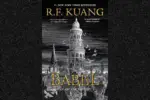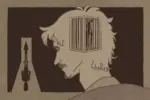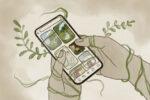Since its first publication in 1992, Donna Tartt’s “The Secret History” has been on its way to becoming a cult classic. In the last two decades, Tartt has already published two more books: “The Little Friend” in 2002 and “The Goldfinch” in 2013. Yet, her timeless debut novel, “The Secret History,” has managed to captivate young adult audiences and become a source of inspiration and an object of adoration for college students around the world.
Tartt’s novel follows the college experience of Richard Papen, a reserved but studious college student who, in the 1980s, transfers from a university in California to a smaller liberal arts college in Vermont. He does so in an attempt to flee from the tedious medical and science programs his parents pressured him into taking in California.
In his new college, Hampden College, Richard is able to indulge in studying his preferred discipline: classics. He becomes captivated by the Greek classics professor, referred to as simply “Julian” throughout the novel, who only accepts five students to work with him. When Richard arrives to Hampden, he becomes a rare exception and enrolls as Julian’s sixth student.
After intermingling with his five new classmates, Richard quickly falls into a streak of decadence. Unhealthy relationships then develop between Richard and his classmates and even with Julian, who Tartt soon reveals is actually a darker, more manipulative figure than he first appears to be. Soon, “The Secret History” evolves into not just a story about a student trying to earn a degree, but rather a story of mystery, murder, jealousy and the barbarism that lies in within even the most refined and intelligent college students. Despite the blood and mania that develops throughout “The Secret History,” Richard continues to view his surroundings through romantic, ideal eyes.
As the narrator of the story, Richard always notes the black, classic attire that his classmates wear, the fountain pens they write with and their esoteric conversations about ancient Greek grammar. His narration — at least before bloodshed ensues — can’t help but make out the life of a college student to appear as one of genuine enlightenment and intellectual growth. Students in college are challenging their minds and growing, not just drudging along each week to just barely finish their assignments on time. In Tartt’s world, college appears as the ideal place of transformation and insight that college is meant to be, at least ideally in theory.
As the novel progresses, Tartt’s readers also begin to share this view of Hampden College. Despite witnessing how mentally unstable the members of Richard’s cohort are, readers begin to admire how studious they are in exploring their passion for the classics. Readers can see how the students avidly translate texts into Latin in their free time or stay up until four in the morning reading classic American literature until their bedroom is the only one with lights on.
Students aren’t shown as just slacking off and wasting their tuition on partying, as present-day media today so often does. Instead, Tartt shows college students can be the perfect representatives of ambition and intellectual rigor. Yet, she tactfully does this without reducing them to boring pedants and still chooses to highlight the recklessness that accompanies college youth. Richard classmates have casual sex, take recreational drugs and slip into bouts of explosive violence. Within reading “The Secret History,” readers can acknowledge and perhaps even relate to the danger that college life can present while also understanding that college can bring the best out of them.
Although it was published in the early 1990s, “The Secret History” has continued to surge as a major favorite among college-age students online, especially on social media platforms. Logging onto the more bookish corners of Instagram, it’s not uncommon to find picturesque photos of a paperback copy of Tartt’s novel sitting next to a mug of coffee on a rustic, wooden table. Some Instagram photographers have even attempted to evoke the dark, romantic mood Tartt’s writing by using dark, baroque lighting in pictures of her novel or by posing the book next to Greco-Roman statues that the book’s characters themselves would have admired.
Meanwhile, on Tumblr, bloggers post originally created digital edits of the characters and gif-sets of the overall gloomy mood of the novel. Some bloggers have even created playlists for the novel. Incredibly, a new genre has also emerged online known as “dark academia” that has similar plots that romanticize the liberal arts while showing students trying to navigate the drama that comes with their studies. Fans of the new genre have delved into similar books, such as M.L. Rios’ “If We Were Villains” and Carol Goodman’s “The Lake of Dead Languages.”
Off the internet, college students have grown attached to the novel’s characters. The sheer dedication to their studies that Richard and his classmates exude appears to be contagious. College students, at both undergraduate and graduate levels, have begun adopting the minimalist, dark style of dress paired with leather, Oxford shoes that the students in the novels are shown to wear. Among some, the typical, cheaper pens students use to scribble those notes are being replaced by finer ballpoint or even fountain pens.
These radical shifts in basic fashion and study habits shows that college students who are fans of the book have changed how they’ve seen college. They have continued to romanticize college life, much like Richard does in the book, even once they had put “The Secret History” down and resumed their normal lives. Instead of viewing college with the usual dread that college students usually do, they have delved into their studies with a renewed, finer appreciation for things as simple as the aesthetic of pens, notebook pages and cursive writing on lying on their desks.
Ultimately, this change in how some, although certainly not all, college students view their studies was made possible by how nuanced Tartt’s characters in “The Secret History” were. Had Richard and his classmates simply been stereotypical nerds with no dark qualities or questionable morals, readers wouldn’t have been so engrossed by the mysterious auras of her characters. Through its eccentric characters and the baroque, dark mood of her overall novel, Tartt’s “The Secret History” shows how college can be a time of sudden and sometimes dangerous metamorphosis.
















